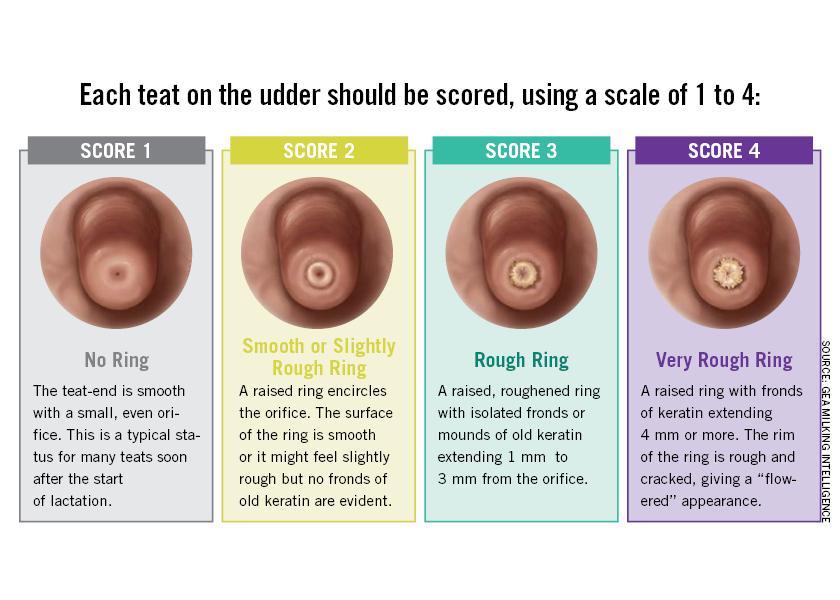Teat Ends Talk

Teat end scoring provides Paul Virkler with some valuable insights into a dairy cow’s milking experience.
“In the immediate term, it tells us whether that cow is happy with the way she was milked,” says Virkler, DVM, Department of Population Medicine and Diagnostic Services, Cornell University, Ithaca, N.Y.
In addition, teat end scoring provides Virkler with insights into whether the milking process is harmful to the animal and what needs to be addressed.
“Short-term changes of the teats can prolong the closure of the teat canal after milking and make the cow more susceptible to disease such as environmental mastitis,” he says. “Also, these short-term changes can lead to longer-term changes over time such as hyperkeratosis.”
The Scoring Process

“Make sure you score a haphazard sample of the cows being milked. You want first-lactation animals, older cows, mid-lactation, etc., a good representation of the herd,” he says.
Factors such as hardness, color changes, swelling and abrasions figure into the assessment, which should be done immediately after the milking unit is removed from the animal.
Each teat on the udder should be scored, using a scale of 1 to 4:
1 or Normal – This would be a smooth teat.
2 or Slight Ring – A light ring is visible on the teat but no cracking or keratin fronds.
3 or Rough – The teat end shows a rough ring with some cracking and keratin fronds.
4 or Very Rough – The teat has >4 mm of rough keratosis on the teat end.
When To Score
Dr. Bill Koffman, Dairyland Veterinary Service, Casco, Wis., recommends scoring a milked herd on a quarterly basis.
“Changes in weather, workers and equipment can cause the teat end to change,” he says. “(Scoring) should also be done a week or two after changes have been made to the milking system, procedures have changed or new personnel have been trained. The scores should be saved and compared to ones previously done to get an idea of how the milking process is changing,” he adds.
Koffman wrote an article on assessing teat ends, which is available here: https://bit.ly/3KWSDYn
Virkler says he gets concerned when 20% of the animals in a herd have teat ends showing some level of damage.
“You have to consider the type of damage present. We might accept some firmness issues in the teat ends, for example. But when there are open lesions – cuts and cracks on the teats — the producer needs to take action when that reaches 5% or more. This signals a problem in the herd that needs to be addressed,” he says.
While teat end scoring helps identify a problem exists, the producer and veterinarian still have to investigate the source. It could be a weather issue, equipment (pulsation or vacuum) or a milking management problem leading to low milk flow, or some combination of factors.
“We can collect the data, but the herd veterinarian is critical to interpreting the results and determining what management plan or practices need to be implemented,” Virkler says.
13-Year-Old Registered Holstein Cow Claims New Record for Most Lifetime Milk
AABP Recent Veterinary Graduate Conference Turned “Competence to Confidence”
Dr. Calvin Booker Honored for Contributions to Cattle Industry







